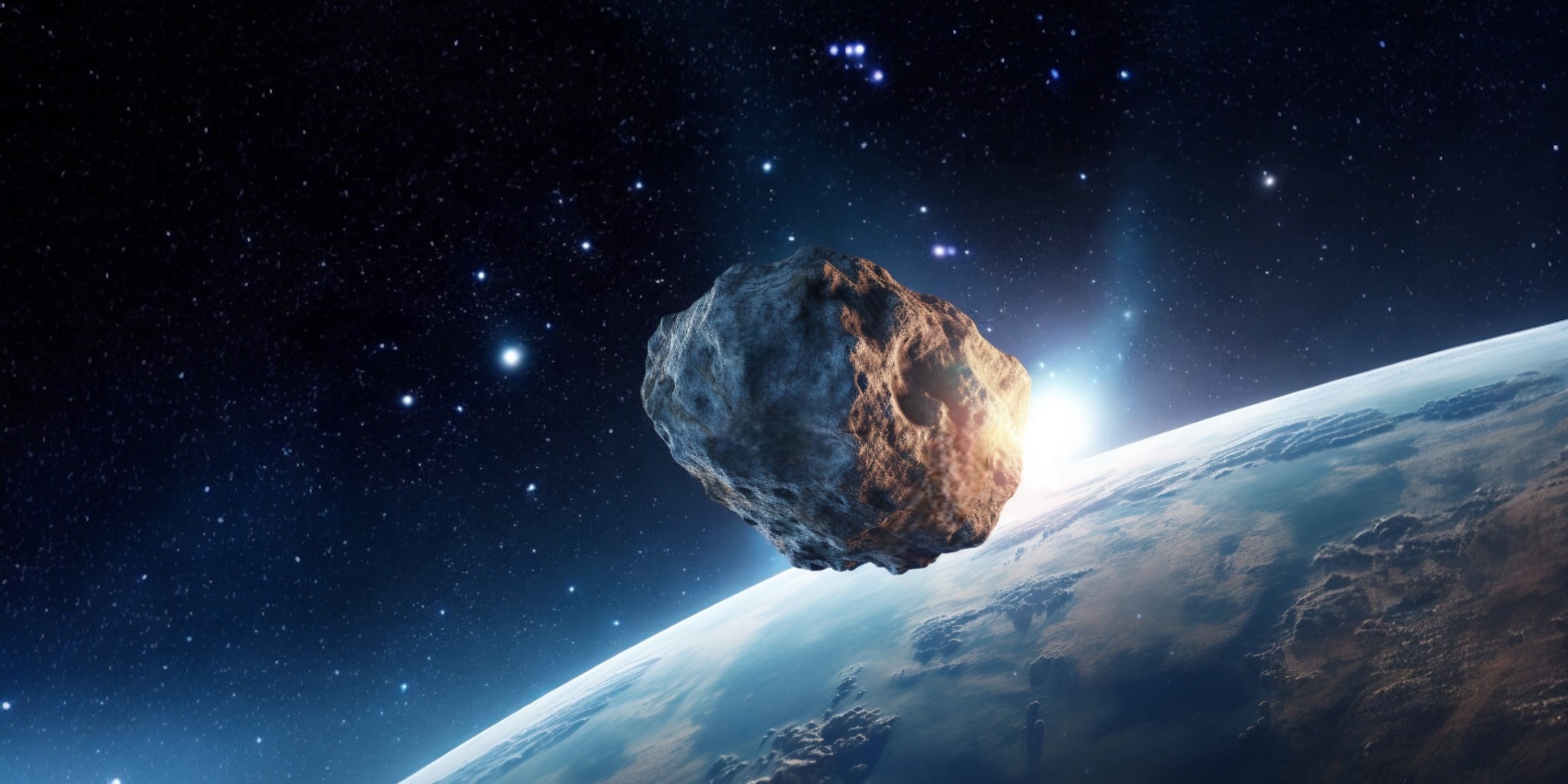
A meteorite is a fragment of a celestial body that hits the Earth's surface after passing through the atmosphere. However, to understand the whole process of its formation, it is important to first distinguish several terms.
- An asteroid is a celestial body, usually made of metal or rock. Most asteroids are found in the asteroid belt between Mars and Jupiter. If two asteroids collide or if there is another strong disturbance, smaller fragments can be released.
- A meteoroid is a smaller fragment that is released from an asteroid or comet and travels through space. Meteoroids are often very small - from grains of dust to pieces several metres long. When a meteoroid enters a collision course with Earth and enters its atmosphere, it turns into a meteor.
- A meteor is a phenomenon that occurs when a meteoroid enters the Earth's atmosphere. At high speeds, the friction of the atmosphere causes the meteoroid to heat up and begin to glow, creating a bright trail of light, often called a "shooting star". If the meteor is very bright and accompanied by a loud sound, it is referred to as a bolide.
- A bolide is a bright meteor that can reach a brightness comparable to the Moon. It usually explodes or shatters into smaller pieces in the atmosphere, which can be heard as a shock wave. Bolides can be so powerful that they can be seen during the day.
- A meteorite is a body formed when a meteoroid survives a passage through the atmosphere and hits the surface of the Earth. Meteorites can be rock, iron or rock-iron, depending on their composition and origin. Some meteorites are very old and contain material from the formation of the solar system.
Where do meteorites come from?
Meteorites are often very interesting relics from a time when our solar system was just forming, and their origins are varied and rich in stories. These unique bodies come from several different sources.
1. Main belt of asteroids
The first and most important origin of meteorites is the asteroid belt, which extends between the orbits of Mars and Jupiter. This region is home to a myriad of asteroids, which are remnants of material from the formation of the solar system. When dramatic collisions occur between these rocky bodies, fragments are released and then travel into deep space. Some of these fragments, driven by the gravity of our planet, end up on Earth as meteorites.
One of the most famous asteroids in the belt is Vesta, the second largest asteroid in the asteroid belt, from which meteorite NWA 14131, for example, is believed to have originated. Many meteorites are thought to have come from the asteroid belt, including Chelyabinsk, Muonionalusta, Wabar, Seymchan, Campo del Cielo and others.
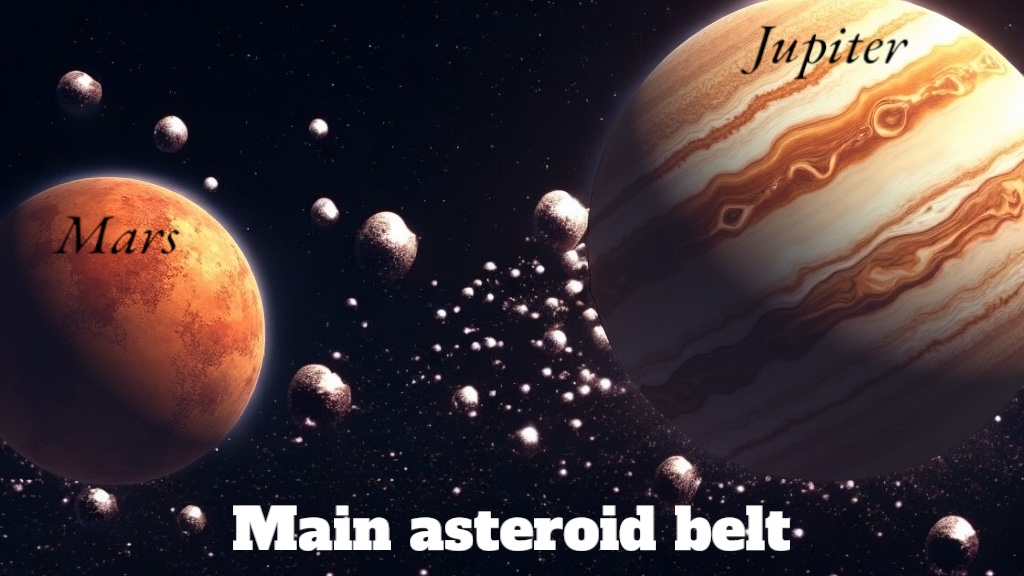
And how did this belt come about?
The asteroid belt is located between the orbits of Mars and Jupiter, in an area between 2 and 4 astronomical units from the Sun. This belt was formed from material that could not coalesce into a full-fledged planet due to the gravitational influence of Jupiter, instead holding a number of smaller objects. Many asteroids formed afterwards as a result of collisions between the original bodies, when larger fragments broke into smaller pieces. These collisions not only shaped the different shapes and sizes of the asteroids, but also allowed the fragments to be released to collide with Earth.
2. Moon and Mars
Another fascinating source of meteorites is the Moon and Mars. When an asteroid hits the surface of the Moon or Mars, it causes materials to be ejected into space. But the process of ejection can be caused by factors other than collisions with other bodies, such as volcanic activity or even gravity pulling fragments outwards. Some of these ejected materials, if they have sufficient velocity, escape the gravitational field of the Moon or Mars and head towards Earth. The journey can take thousands to millions of years before the meteorite finally enters the Earth's atmosphere and hits the surface. We refer to these meteorites as lunar and Martian meteorites. One of the most famous are the lunar meteorite Bechar 003 and the Martian meteorite Amgala 001.
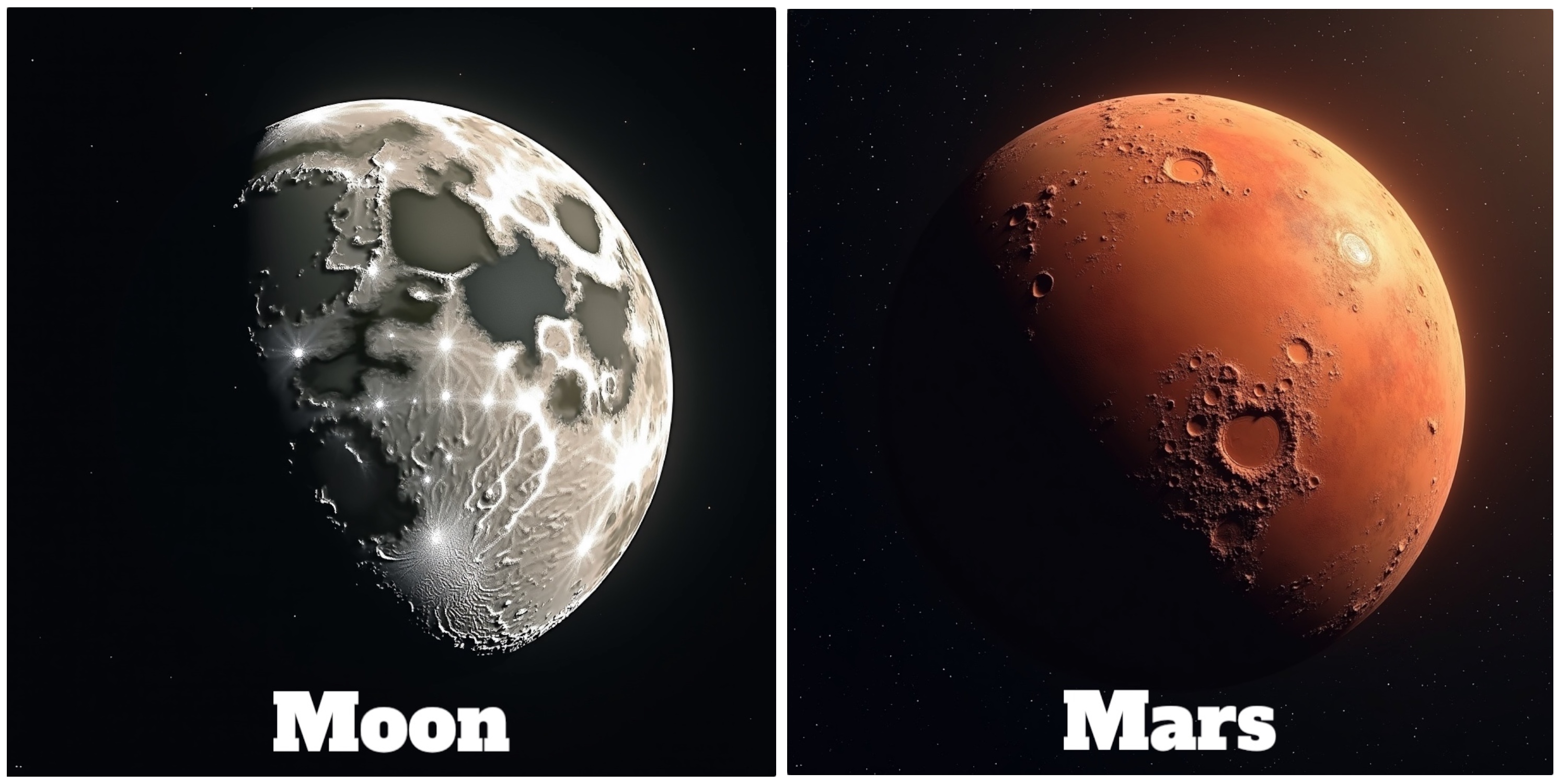
3. Planetary Remains
Some meteorites may be remnants from the time of the formation of the planets. When the planets were forming, there were many collisions that ejected fragments from their surfaces. These fragments, which did not have enough energy to come back, may be on a trajectory that takes them to Earth.
4. The outer solar system
The source of meteorites can be the outer region of the solar system, such as icy moons and Kuiper Belt objects. These objects, often composed of ice and rock, can be subjected to collisions that tear them apart and release fragments into space. Some scientists believe that meteorites may also come from the outer regions of the solar system, including the Kuiper Belt, but none have yet been found that have been conclusively confirmed as coming from this region. The Kuiper belt contains many small icy and rocky bodies that may be potential sources of meteor fragments, but it is not yet possible to identify them conclusively. So for now, these are speculations rather than confirmed finds.
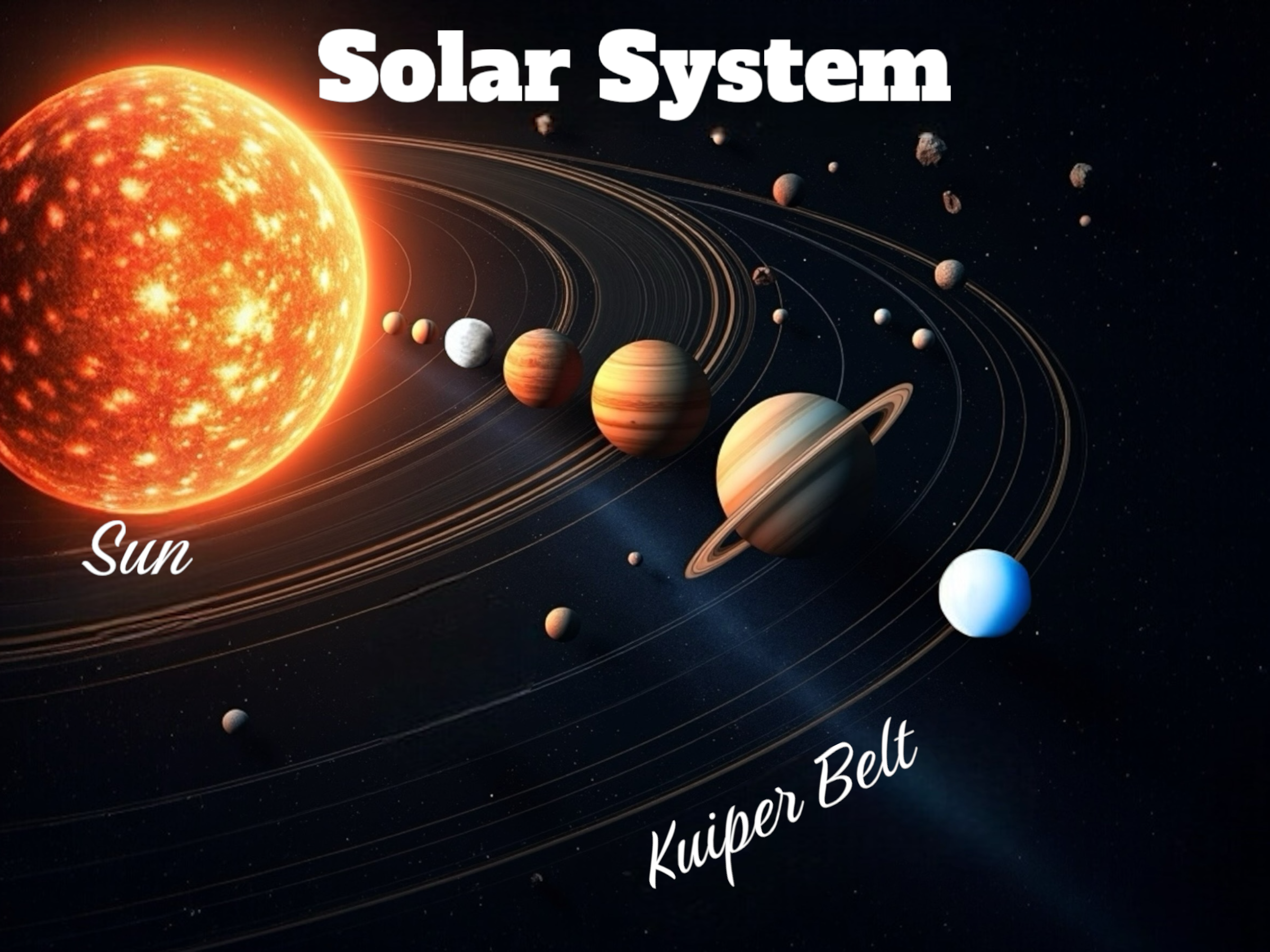
5. Comets
Comets, with their icy cores and dust clouds, also play a role. As these comets approach the Sun, they sublimate the ice and release dust particles that can form meteor showers. When these particles enter the Earth's atmosphere, they turn into bright meteors that light up the night sky.
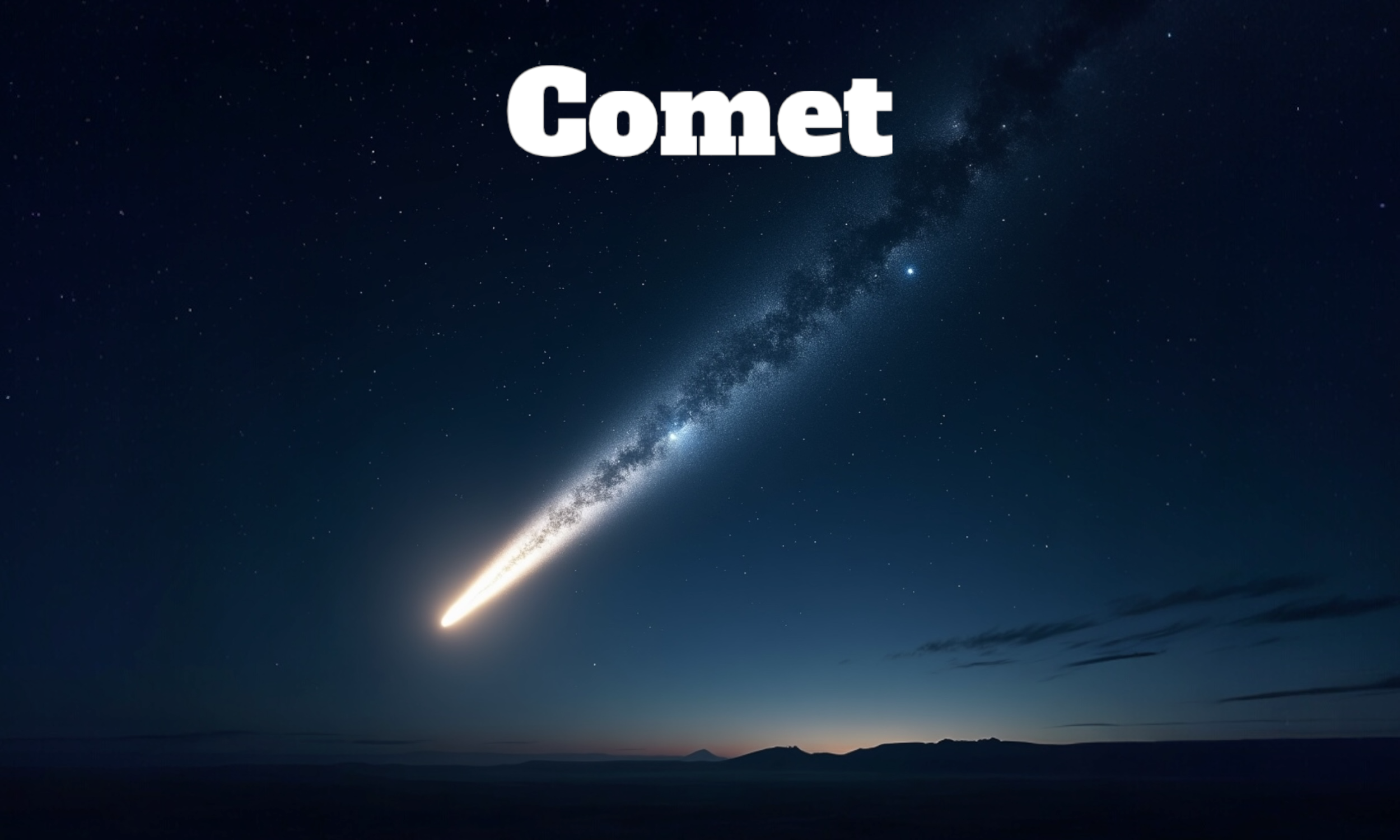
But are there meteorites from comets?
Although no meteorite has yet been found that is clearly from a comet, based on research into cometary fireballs and transitional objects between comets and asteroids, it is thought that comets can produce meteorites. The most likely candidates are remnants from a parent body originating in the region around Jupiter that could survive entry into Earth's atmosphere. Such meteorites should be rare, dark, faint, porous and contain organic compounds, similar to carbonaceous chondrites. Some meteorite samples, such as Krymka and Supuhee, suggest that cometary meteorites may be identified in the future.
6. Protoplanets
Meteorites also come from protoplanets, which are smaller planetary bodies that formed in the early stages of the solar system. When the surface of these protoplanets was impacted, fragments of their material may have been released and ejected into space. These fragments can then travel through space and, if they have a favourable trajectory, can eventually enter the Earth's atmosphere and fall to the surface as meteorites. An example of such a meteorite is Erg Chech 002, which is a volcanic rock from a protoplanet older than the Earth itself.
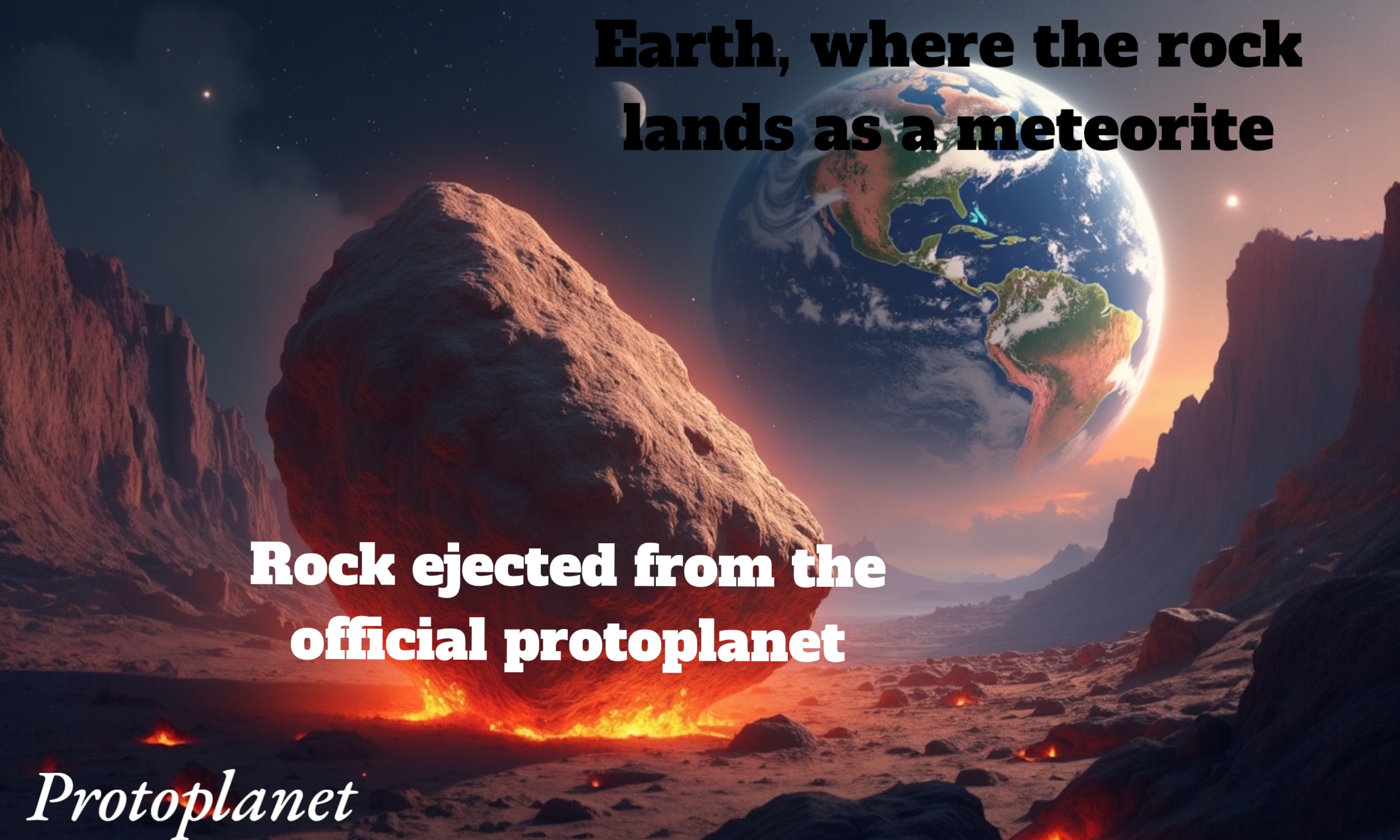
What is the fate of the protoplanets?
- The creation of planets: Some protoplanets that had sufficient mass and were able to attract surrounding material became full-fledged planets. During this process, more planetesimals and other material accumulated, leading to their enlargement and the formation of stable orbits around the Sun.
- Fragmentation: Many protoplanets were unable to become full-fledged planets and were instead destroyed by collisions with other planetesimals or protoplanets. These collisions led to fragmentation, and the fragments from these protoplanets then became meteoritic material that could be ejected into space.
- Asteroid belt: Some protoplanets that were in the region between Mars and Jupiter became part of the asteroid belt. This region contains many small bodies that remained unfinished and did not develop into full-fledged planets. As already mentioned, Jupiter's gravity played an important role in this process, destabilizing the orbits of some planetesimals and preventing them from merging into larger bodies.
- Removal from orbits: Other protoplanets may have been ejected from the solar system due to strong gravitational interactions with other planets such as Jupiter or Saturn. These interactions may have caused the protoplanets to enter hyperbolic orbits and escape the solar system.
- Causing meteor showers: Fragments from protoplanets that have entered orbits around the Sun can become the source of meteor showers as the Earth passes through the rest of the orbit of these fragments.
- Change in composition: Remaining protoplanets that have not lost their orbits may have their chemical composition changed by solar radiation, heat, and other factors. These changes can affect their physical and chemical properties.
Overall, protoplanets have had different fates, although most have either disappeared or become part of other planets or the asteroid belt.
Conclusion
Meteorites are fascinating remnants from a time when our solar system was just beginning. They come from different regions, such as the asteroid belt, the Moon, Mars or protoplanets, and can provide valuable information about the origins of the Solar System and the composition of individual bodies in the Universe. Whether they are fragments of disintegrated planets, fragments from an asteroid or fragments from the Moon or Mars, each meteorite contains information about the formation and composition of other bodies in the Universe.
You can find our full range of meteorites here
Author: Terezie Laubrova
This article is protected by copyright under Czech law (Act No. 121/2000 Coll., the Copyright Act). Any copying, distribution, or other use of the content without prior written consent from the author is prohibited. Violation of copyright law may be subject to civil and criminal penalties, including damages and sanctions under Section 270 of the Czech Criminal Code.
